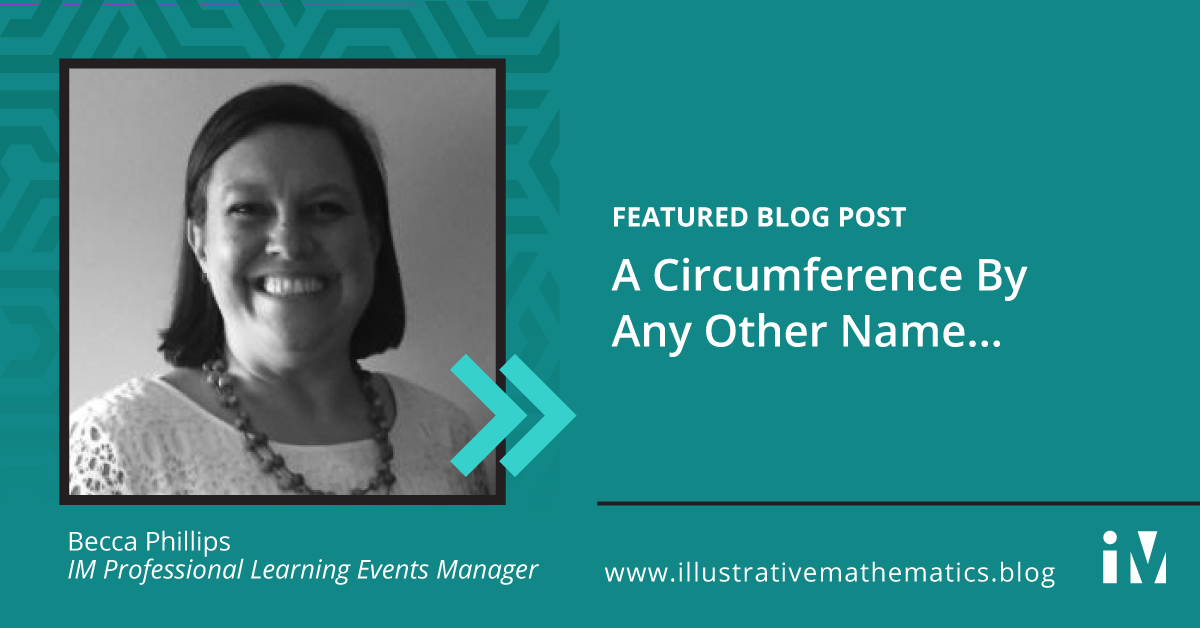By Becca Phillips
You can’t tell a child “there’s no such thing as monsters” because, well, then, why is there a word for it?
I was given this advice when my own daughter was an infant, but I’ve thought a lot about it over the years, and how inextricably linked our conceptual understandings are with the words we use to describe them. Telling the Little Mermaid that thing was called a fork didn’t actually keep her from using it to comb her hair; just knowing the word doesn’t help me understand. Conversely, if I’m struggling with my chopsticks in Tokyo, it would be helpful to know the Japanese word for this tool I need. Having a need for a term in order to communicate makes the vocabulary more memorable.
In math class, students must not only understand concepts but also the vocabulary to communicate their ideas and to make connections with other ideas. A second grader brought me a paper where she had drawn arrays to explore multiplication. Building on her understanding of how subtraction relates to addition, she had written
3 X 5 = 15
15 ⭄ 3 = 5.
When prompted about the unknown symbol, she said, “I call it “times-minus.” She had the concept of division, but she needed to be told the word for it.
As we work with our students, our interactions help them build understanding and vocabulary interdependently. We name the a-ha moments, using words for things they don’t know. We work to make connections between what students know and what they need to know. We ask them to step outside what is comfortable and familiar, using vocabulary to move new ideas into the realm of familiar.
But this interplay between understanding and language may stand in contrast to the way that we have learned (or learned to teach) mathematics. For example, a common way of teaching new mathematical vocabulary is to begin every new unit by having students write the vocabulary words in a notebook and copy the definitions from the glossary. However, one of the beliefs that guided the authors of the IM curriculum at all grade bands was that all students should “play with mathematical ideas before formal terms, conventions, or procedures are introduced.” This allows students’ ownership over their own understanding to drive the need for the accompanying vocabulary to help them fully realize and communicate their ideas.
In grade 7, we help students see the consistent ratio of circumference to diameter before we name it “pi”. In grade 8, we ask students to explore similar triangles and points on a line before we use the word slope. In high school, we spend 3 days talking about the ratio of the opposite leg to the hypotenuse before we say “sine of x” because the ratio is the thing, after all. By waiting to introduce vocabulary until after students have a chance to explore a concept, we are letting their thinking take center stage, letting their understanding lead the way, and then explicitly giving them the words they need to talk about what they know.
So the next time the word is on the tip of your tongue, you can see the thing you’re trying to name, and you’re snapping your fingers, “what is the word for…?” remember that this is where we want our students to find themselves. “I know what it is, I just need the word for it,” because if that’s the case, learning vocabulary goes so much deeper than rote lists.
Next Steps
Take a few minutes to look at the Math Language Routine: Collect and Display. So much more than the “gallery walk” that the name might imply, this routine involves the teacher collecting the informal language that students use as they engage with a task, and then during the synthesis making visual connections between the informal language used and the formal mathematics vocabulary. Read the description, and note the ways that this routine fosters students’ independent participation, and also values the teacher’s responses as a means to move the students’ learning further.
Recommended reading for the research behind these principles:
https://ell.stanford.edu/content/mathematics-resources-additional-resources
